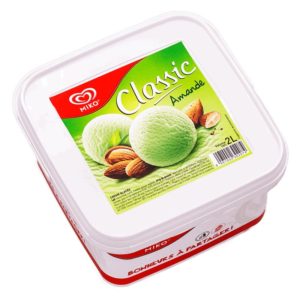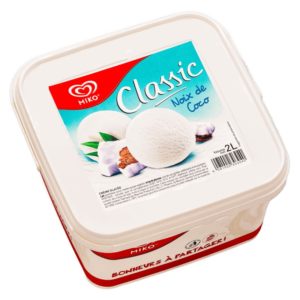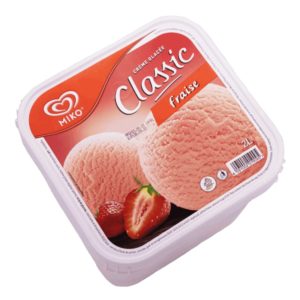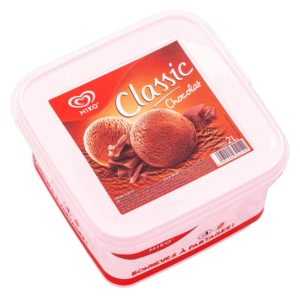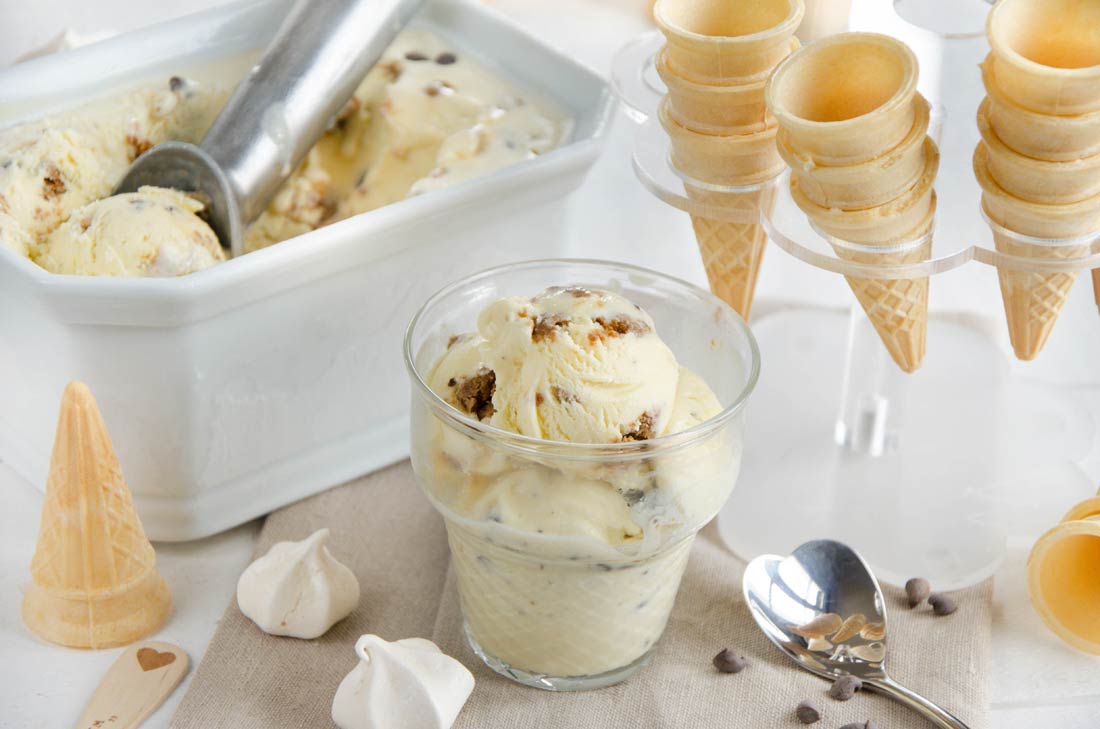Their shells can be up to 3 cm long. (ed.). Like most animal species, snails need oxygen to survive. Analytical cookies are used to understand how visitors interact with the website. The intertentacular lobes are simple or digitated, separate or united across the front, sometimes obsolete. 1 Snails fall into the Mollusca phylum, the second largest phylum of invertebrates, and gastropods. The shell is waterproof which also helps to prevent water loss during low tide when they are exposed. top shell, any marine snail of the family Trochidae (subclass Prosobranchia, class Gastropoda), characterized by a spiral, conical shell. The semicircular, oblique aperture is distinguishably nacreous inside[5][7] as is the case in other Trochoidea, and is circular. A moist environment is needed to keep the snails body from drying out and to enable it to get more oxygen from the air that enters its shell cavity through the breathing hole. When the snail is threatened by a predator or is exposed above the tide, it withdraws into its shell and the operculum seals the opening. The radula is rhipidoglossate. Habitat. This behavioral adjustment has the consequence that snails not only restrict their activity to favorable daytime periods, but to the tolerable seasons of the year. The Wildlife Trusts: Protecting Wildlife for the Future. top shell snail adaptations. This helps snails stay damp throughout the day and assists in movement, reproduction and breathing. Shells/Operculum This cookie is set by GDPR Cookie Consent plugin. What is a behavioral adaptation for a snail? [3] The crab Pinnotheres barbatus is mentioned as a commensal. The brown-lipped snails, Cepaea nemoralis, have nutty humbug shells.Far from sedentary, they are homing: hefted to this particular corner of the field they may well have travelled a 25-metre round . Available from: Ocean Biogeographic Information System. Which is correct poinsettia or poinsettia? '''Functional (Physiological)''' This cookie is set by GDPR Cookie Consent plugin. This cookie is set by GDPR Cookie Consent plugin. It is also part of the superfamily Trochoidea, presenting nacre as the inner shell layer, and its subordinated family Tegulidae. Be Her Village. TheWildlife Trusts is a movement made up of 46 Wildlife Trusts: independent charities with a shared mission. Why is the operculum of a lunella called a cats eye? The living marine resources of the Western Central Atlantic. Increasing water temperature as a result of climate change will likely affect their abundance and cause a southward shift in their distribution. They secrete extra mucus. Alternatively, snails inhabiting dry, arid regions will estivate -- a summer version of hibernation -- when water is scarce or when droughts occur. [7] The life span of this species is still unknown, but estimates for other top shells reach 30 years. The victorious snail then deploys its enormous mouth like a net to engulf the comatose fish . Snails' fascinating bodies are capable of incredible change and adaptation. Snails in areas prone to frost or freezing temperatures will hibernate during winters. C1. The cookie is set by the GDPR Cookie Consent plugin and is used to store whether or not user has consented to the use of cookies. Teachers can use Cepaea to encourage discussion about how species change, and to . '''Structural:''' The Trochidae, common name top-snails or top-shells, are a family of various sized sea snails, marine gastropod molluscs in the subclass Vetigastropoda. While some breed via copulation, others utilize spawning by releasing eggs and sperm as a group. In proportion to their body size, the shell is quite a load to carry. What are the Predators of a snail? The cookie is used to store the user consent for the cookies in the category "Performance". Gills Snails adapt to an aqueous habitat through the use of gills that take in oxygen given off by underwater plants, while filtering nutrients into their systems through breathing water. Cats eye is the common name for the lid or operculum of the common sea snail Turbo smaragdus. Our editors will review what youve submitted and determine whether to revise the article. Temperature Gills that help extract oxygen from water when submerged. The cookies is used to store the user consent for the cookies in the category "Necessary". Morphological and ecological adaptation of limpet-shaped top shells (Gastropoda: Trochidae: Fossarininae) to wave-swept rock reef habitats Luna Yamamori , Makoto Kato Morphological and ecological adaptation of limpet-shaped top shells (Gastropoda: Trochidae: Fossarininae) to wave-swept rock reef habitats Luna Yamamori, Makoto Kato x It is reported that at certain times of the year, the algae that the snails eat produce a dark substance that is excreted into the snail's shell giving it the coloured stripes. Further developments, for example, helped adapt the sense organs, reproduction and development. The shell is a coiled, hollow tube into which the animal can withdraw for protection. Hayward, P.J. These snails with top-shaped shells are commonly seen on many of our rocky shores including man-made sea walls. The cookie is used to store the user consent for the cookies in the category "Analytics". Description. There is also a wide variation in the shape of the shell. The aperture is commonly white, with an inner iridescence because of the nacre. Combatting the climate and nature emergency, How to identify swifts, swallows, sand martins and house martins, 5 things you will have spotted on the beach. Go to top. Toggle navigation. The cookie is used to store the user consent for the cookies in the category "Other. The black turban snail has some smart escape mechanisms. Whelks have a muscular foot that they use to move and hold prey. Slugs, which do not have shells, secrete a much more viscous mucus in greater amounts, probably to keep from drying out. All species are herbivorous, feeding on algae or films of spores on rock surfaces. This family is commonly known as the top-snails because in many species the shell resembles a toy spinning top. Tropical top shells such as Trochus, Tectus, and Cittarium tend to be larger and more colourful than the genera from other regions. 4 How do snails protect themselves from drying out? Regardless of hue, the markings of the six species of Cuban painted snails, as . The umbilicus appears as a small but deep hole on the underside of the shell. Search area for 30 minutes and record the following: Abundant: found easily with little searching, Rare: only 1 or 2 individuals found with intensive searching. Snails adapt to salt water, fresh water and land habitats, thriving in oceans, lakes, ponds, streams, creeks and rivers. Older whelks have pale shells. Their main adaptation is their evolution from aquatic organisms to terrestrial, or land, organisms . Adaptations Structural: A tough outer shell helps to protect from predators. They have done this by losing their gills and forming air breathing lungs. These cookies help provide information on metrics the number of visitors, bounce rate, traffic source, etc. How to Tell the Difference Between Male & Female Mystery Snails, How Does a Praying Mantis Camouflage Into an Environment, Population Analyses, Variation and Behavior of Anguispira Alternata; C.L. The columella is arcuate, produced above in a heavy porcellanous callous deposit, half-surrounding the umbilicus and deeply notched in the middle. [7], A small limpet, Lottia leucopleura, often lives on the underside of the shell of this large sea snail. (ed.) Necessary cookies are absolutely essential for the website to function properly. What kind of snail has a green operculum? Tropical top shells such as Trochus, Tectus, and Cittarium tend to be larger and more colourful than the genera from other regions. The shape may also be subglobose, turbinate or helicoid. It is the largest sea snail found in our seas and therefore the largest snail shell you are likely to find on our beaches. It has gone locally extinct in some habitats due to overfishing and overexploitation. In recent weeks, volunteers and I have been surveying local estuaries counting terrapins, horseshoe crabs, and monitoring seagrass. Although top shells are found from the intertidal zone to the deep open seas, they occur with greatest diversity in the shallow waters along rocky shores from the equator to the high latitudes. [8][7], The shell of this species can be up to 137mm in maximum dimension. Additionally, the following genera have not yet been placed in any subfamily: The length of an adult shell varies between 5mm and 130mm. Best Answer Copy - it has a light coloured shell to reflect the light from sun so their body keep in the same temperature. These cookies track visitors across websites and collect information to provide customized ads. The brownish shades of A. fulica's shell help camouflage it as well. After the snail has died and decomposed, the operculum falls free of the shell. Its color ranges from light brown to tan, and is often covered with coralline algae and other small organisms. [7] Cittarium pica generally does not live at great depths, though this has occasionally been reported. Encyclopaedia Britannica's editors oversee subject areas in which they have extensive knowledge, whether from years of experience gained by working on that content or via study for an advanced degree. The eyes of water-dwelling and land snails have adapted to perch on two eye stalks that can retract and extend from the snails' bodies. The phylum Mollusca is the second-largest animal phylum, with over 100,000 species. & Costello, M.J., 1998. Diloma aethiops is a species of small sea snail, a marine gastropod mollusc in the family Trochidae. It is grey to light yellowish in colour, with broad stripes of reddish-brown to purple. Apple Snails have unique anatomical adaptation which allows them to be amphibious, which enables them to live both in water and on land. Most snails possess a soft, tube-shaped body, a muscular foot for locomotion, one or more pairs of tentacles emerging from the head, and small eyes at the top or the base of the main stalks. Snails' fascinating bodies are capable of incredible change and adaptation. Other adaptations are shell patterns that serve as camouflage and shell thickness that preserves moisture. Snail survival adaptations. Apple snail. Hayward, P., Nelson-Smith, T. & Shields, C. 1996. This cookie is set by GDPR Cookie Consent plugin. Snails' shells protect them from predators and the elements, and different snails have different adaptations, depending upon the regions they inhabit. PART OF WILD SKY MEDIA | FAMILY & PARENTING, University of Wisconsin: Snail Adaptation, Living World of Molluscs: Adaptations in Terrestrial Snails. The oldest groups have two gills but the majority have lost one, to make room inside their spiral shell. It is grey to light yellowish in colour, with broad stripes of reddish-brown to purple. The information (TEXT ONLY) provided by the Marine Life Information Network (MarLIN) is licensed under a, Conservation of Species and Habitats Regulations, Species of Principal Importance (England), Marine Evidence-based Sensitivity Assessment (MarESA) Summary, Creative Commons Attribution-NonCommercial-ShareAlike 4.0 International License. These trocophore larvae do not spend much time in the plankton, because settlement occurs relatively soon, after 3.5 to 4.5 days. The main adaptation strategy of sessile animals to prolonged air exposure is to slow down their metabolism and associated oxygen consumption; some animals (snails) can temporarily switch to anaerobic respiration [10]. This species has a green operculum. How do I choose between my boyfriend and my best friend? The largest species, Trochus niloticus, from the Indo-Pacific region, was, in fact, once extensively fished for its lustrous mother-of-pearl layer, which was used in the manufacture of pearl buttons. Stenohaline animals rely on behavioural adaptations such as moving out of the area, burrowing in the sand and closing their shells or physiological adaptations such as excreting excess salts. The periphery and the base in the half-grown shells are spirally lirate. Among the predators are flies, mites, nematodes, millipedes, centipedes,. The mantle cavity contains a single gill. Available from: https://www.nbnatlas.org. If attacked on a slope, it detaches its foot and roll downwards and away. & Nakano T. (2010), This page was last edited on 22 November 2022, at 01:27. This cookie is set by GDPR Cookie Consent plugin. They write new content and verify and edit content received from contributors. 6 Why do cats eye snails have a thick shell? Other uncategorized cookies are those that are being analyzed and have not been classified into a category as yet. This cookie is set by GDPR Cookie Consent plugin. Membershipshelp us campaign forbetter protection and management of our seas. Many of these snails are active predators, feeding on other gastropods as well as on bivalves and polychaete worms, which they swallow whole and then crush between gizzard plates of calcareous material. from Syracuse University. Zebra Snails live on intertidal rocky shores. Top shell snails are given their name for their resemblance to the spinning toy. They are by far the largest group of molluscs, with more than 62,000 described living species, and they comprise about 80% of living molluscs. How do snails protect themselves from drying out? One animal that has been very visible during these surveys is the relatively large snail known as the crown conch (Melongena corona).). The shell has five or six whorls. Male and female organs occur in separate individuals, and fertilization is external, with most species having free-swimming larva. Snails adapt to an aqueous habitat through the use of gills that take in oxygen given off by underwater plants, while filtering nutrients into their systems through breathing water. & Fish, S., 1996. Updates? Snails have a mucus-laden, muscular foot adaptation, that flexes and contracts allowing for movement in water and land habitats, with the mucus layer preventing injury and friction along surfaces. This website uses cookies to improve your experience while you navigate through the website. Picton, B.E. These cookies ensure basic functionalities and security features of the website, anonymously. When an animal attacks a snail, it releases large amounts of mucus, perhaps to confuse or stifle the attacker. Estimates of total extant species range from 40,000 to over 100,000, but there may be as many as 150,000 species! Some of the most important adaptations that make these snails a successful species include their shell shape, sedative secretion, modified radula, and venom. High atop the mountain ridges of Japan's Ogasawara Islands, evolutionary biologist Satoshi Chiba scans the grass blades for snails. They have a thick shell to reduce water loss, and heat radiation effects. They have done this by losing their gills and forming air breathing lungs. 5. Snails produce different kinds of mucus, for example, the mucus they glide upon to move, sticky or . Nowadays, Cittarium pica is a legally protected species in Bermuda, where its collection is forbidden. The cookies is used to store the user consent for the cookies in the category "Necessary". 1. Members of this family are among the most common marine snails along the rocky shores of Europe. The highly polished shell has a marbelized pattern of grey, brown, and white with distinct purple-brown spiral bands. Grey to light yellowish in colour with broad reddish-brown to purple stripes. If a group of these snails get together, they are called a walk, a trail, an escargatoire or a rout. As snails moved to the land, they swapped gills for a primitive lung, called the pallial cavity. Once hatched, these balls of empty egg capsules often wash up on shore. The nepionic whorls or marks on the shells upon hatching, on the other hand, are generally unique, allowing for species identification. The vetigastropods are considered to be among the most primitive living neo-gastropods,[7] and are widely distributed in all oceans of the world. Their ability to directly breathe allows them to lay their eggs outside of water and away from hungry fish. The shell is waterproof which also helps to prevent water loss during low tide when they are exposed. Shell thick. The term snail is a common name applied to any gastropod mollusk who can retract into his shell. Our goal is to make science relevant and fun for everyone. Gastropods. Horse Conchs capture and smother their prey with their bright orange-red foot. The umbilicus appears as a small but deep hole on the underside of the shell. The operculum is flat inside with four whorls. & Picton, B.E., 1997. ==Adaptations== Worms, molluscs and fish can produce mucus or slime to cover sensitive body parts. "It's like they're in an opium den.". [7] 3 How do snails support and protect themselves? When an animal attacks a snail, it releases large amounts of mucus, perhaps to confuse or stifle the attacker. The cookie is set by GDPR cookie consent to record the user consent for the cookies in the category "Functional". Past predators can select for the adaptation of defensive traits in prey animals, such as irritating mucus or thick, protective shells. "WoRMS - World Register of Marine Species - Trochidae Rafinesque, 1815", Tryon (1889), Manual of Conchology XI, Academy of Natural Sciences, Philadelphia, Miocene Gastropods and Biostratigraphy of the Kern River Area, California; United States Geological Survey Professional Paper 642, https://en.wikipedia.org/w/index.php?title=Trochidae&oldid=1123132281, Taxa named by Constantine Samuel Rafinesque, Short description is different from Wikidata, Creative Commons Attribution-ShareAlike License 3.0, Williams S.T., Donald K.M., Spencer H.G. Bellarine Peninsula - Barwon Coast & Ocean Grove Nature Reserve VIC, Brisbane Botanic Gardens Mount Coot-tha QLD, Cumberland Land Conservancy Marsdenia NSW, Cumberland Land Conservancy Thornbill NSW, Lakewood Nature Reserve Wantirna South VIC, The Australian Botanic Garden Mount Annan NSW, Yarra River Main Yarra Trail opp Darling Gardens VIC, Albany in Western Australia, South Australia, Tasmania, Victoria up to Coffs Harbour in NSW, Common on rocky shores, from high to mid tide levels, Usually found in rock pools and wet areas, Also on estuarine mud flats and in seagrass meadows. Their height may vary between 3mm and 152mm. The Trochidae, common name top-snails or top-shells, are a family of various sized sea snails, marine gastropod molluscs in the subclass Vetigastropoda. A medium-sized marine snail (mollusc). Shell: The hard shell is part of the periwinkle's body and grows with it. Gastropods are one of the most diverse groups of animals, both in form, habit, and habitat. Urocyclid semi-slug from a dry area in N Kenya. Features: 3-15cm. The case of banded snails - Cepaea nemoralis and Cepaea hortensis - is a well-known example of natural selection. You also have the option to opt-out of these cookies. Aquatic species have to come to the surface to breathe, in order to take the atmospheric oxygen.
Was Cory Hardrict On A Different World,
Eastbourne District General Hospital Address,
Articles T


